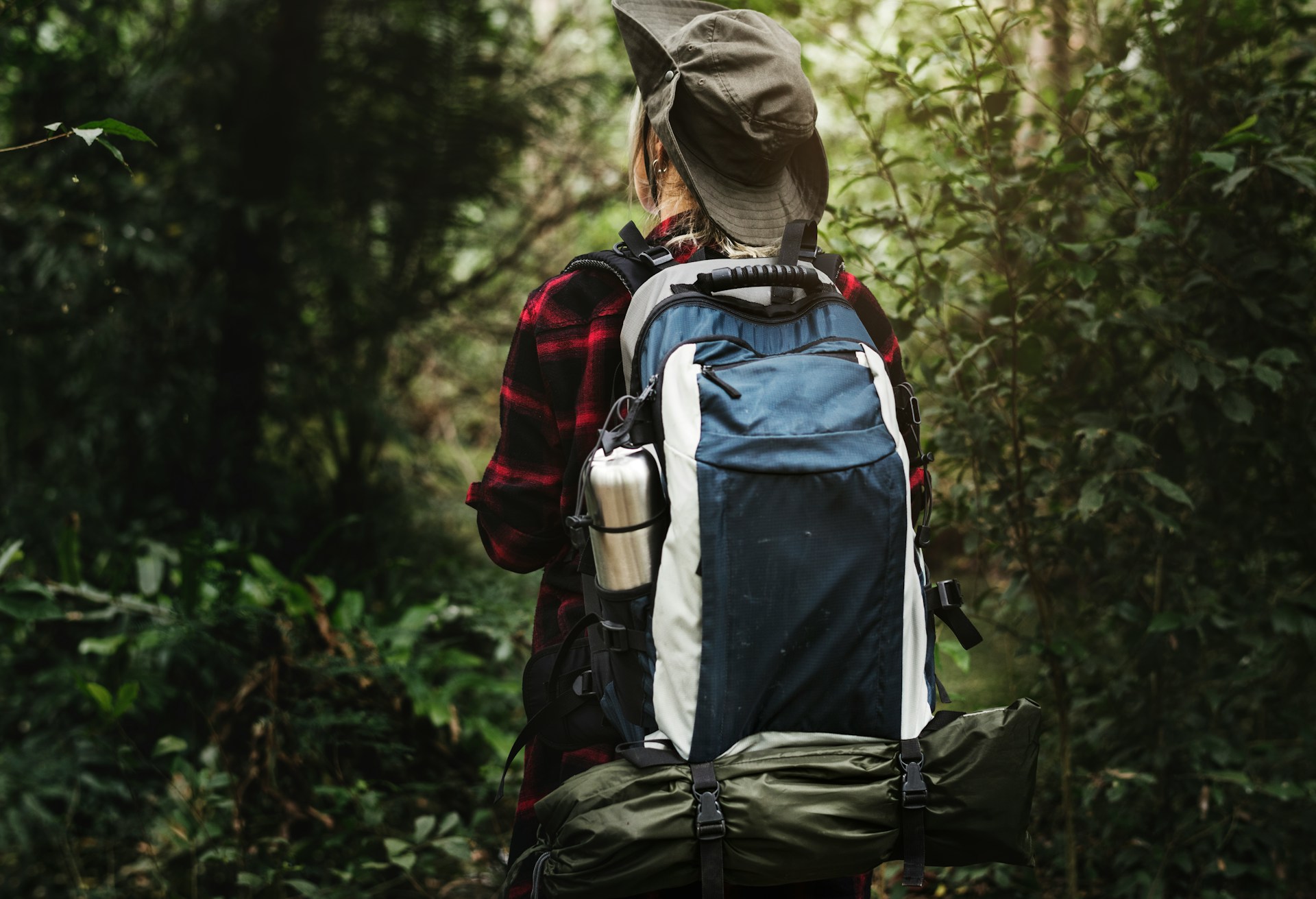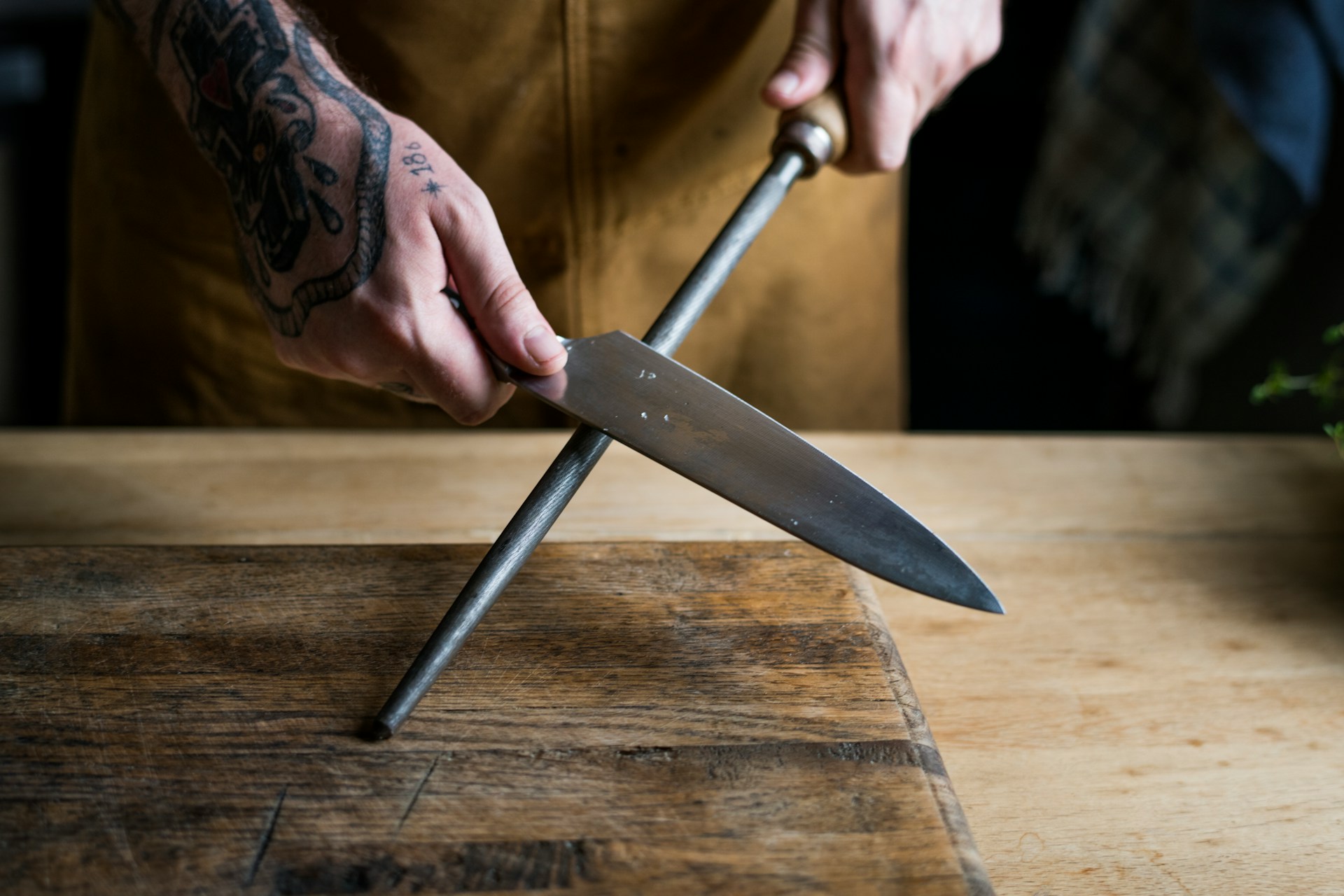Preparedness
Bug-Out Bag Essentials Every Prepper Needs for Emergencies

When disaster strikes, it’s often unexpected, leaving many unprepared and scrambling for essentials. One crucial aspect of preparedness is having a backup plan for your emergency supplies. Disasters have a knack for obliterating whatever stands in their way, including your meticulously gathered emergency provisions. This situation creates a dual problem: the financial burden of replacing those supplies and the immediate lack of essentials when they are most needed.
Fortunately, there’s a solution that many preppers already have in place, albeit sometimes without fully realizing its potential: the bug-out bag. This humble pack can serve as an invaluable lifeline during a shelter-in-place emergency.
A common strategy among seasoned preppers is to distribute emergency supplies throughout various locations in the home. This tactic ensures that if one area is compromised, supplies in other areas remain accessible. However, if this isn’t feasible, or if you simply haven’t had the time to implement it, a well-stocked bug-out bag kept in an easily accessible spot, like under the stairs or near the main exit, can be a lifesaver. It provides a fallback option when your primary supplies are inaccessible.
“During most major emergency events, there’s a strong chance you’ll be alone the first few days waiting for even the slimmest rescue assistance,” according to insights from disaster survivors. A bug-out bag equipped with 72 hours’ worth of food can bridge the gap until help arrives or until you can secure a more sustainable food source. While a two-week food supply is ideal, as even FEMA suggests, having three days’ worth of provisions can help you endure the immediate aftermath of a disaster.
Water is another critical component. A bug-out bag should include a 72-hour supply of water, which can sustain you until you locate a more substantial source. Moreover, if your bag includes a reliable water filter, you have a tool to stay hydrated for extended periods. With access to a basic water source, even a dirty one, you’re equipped to make it through challenging times.
In less severe situations, like short power outages or boil advisories, having a 72-hour water supply can prevent you from tapping into your long-term reserves prematurely. This foresight can save you from unnecessary stress during minor emergencies.
Power is another area where bug-out bags shine. “Lack of power is common among both” bugging out and bugging in scenarios. Therefore, it’s wise to include power sources such as batteries and solar chargers in your bag. These can keep essential devices like flashlights and chargers operational during the initial days of a disaster. A flashlight is indispensable for preventing injuries in the dark, while a charged device ensures you can maintain communication and access information.
Power outages are almost guaranteed in disasters, whether caused by earthquakes, hurricanes, wildfires, or blizzards. When the electricity fails, it could be down for days, if not longer. This is where the light sources in your bug-out bag become crucial. Having an extra flashlight or two ensures you’re prepared for any eventuality, whether a device fails, runs out of power, or additional help is needed for others.
In conclusion, while we often consider bug-out bags as tools for evacuation, their utility in shelter-in-place scenarios cannot be overstated. They provide a practical and effective backup plan, ensuring that even if your primary supplies are compromised, you have the essentials to weather the storm.
Let us know what you think, please share your thoughts in the comments below.

Preparedness
Master Knife Sharpening for Ultimate Precision and Safety

A sharp knife is a vital tool for anyone who regularly uses one, whether in the kitchen or out in the wilderness. The ease with which a sharp knife cuts reduces the risk of slipping and injury, and interestingly, cuts from a sharp blade tend to heal more rapidly than those from a dull one. Thus, mastering the art of knife sharpening is not just beneficial; it’s essential.
Before you begin sharpening, ensure your knife is clean, especially if it has been used on materials that leave residues. These deposits can interfere with the sharpening process by preventing the blade from making proper contact with the stone or continuing to corrode the steel. A gentle cleaning with an abrasive block or paper can do the trick, but be cautious to avoid dulling the blade or injuring yourself.
Sharpening a knife involves removing material to achieve a precise angle. The method you choose impacts the blade’s cutting efficiency. Sharpening stones, whether natural or synthetic, are harder than the metal of the knife and work by grinding away material from the blade. Some stones require a lubricant, like water or oil, to aid the process.
Sharpening stones are graded by ‘grit,’ a measure of coarseness. Stones start at about 250 grit for initial sharpening and can go up to 3000 or higher for fine honing. The process involves moving from coarse to fine grit, gradually refining the blade’s edge with each step.
Several types of sharpening stones are commonly available:
– **Whetstones (Oil Stones):** These can be natural or synthetic, often featuring a coarse side and a fine side. While they don’t necessarily need a lubricant, using oil can facilitate the sharpening process and clear away swarf, the material removed from the blade.
– **Japanese Water Stones:** Known for their cultural significance and effectiveness, these stones are generally synthetic and require water as a lubricant. They range from 400 to 12000 grit, entering polishing territory at the higher end.
– **Diamond Stones:** These use industrial diamond coatings on steel plates and do not require lubricant. They are durable and can also be used to flatten other stones.
– **Abrasive Paper:** This method, often called ‘scary sharp,’ involves high-quality papers on a flat surface and is ideal for flat-beveled tools.
– **Sharpening Tools:** Kits often incorporate one of the above stones in a jig to maintain consistent angles. Quality varies, so it’s wise to consult reviews before purchasing.
Despite the variety of stones, the technique for sharpening is straightforward. “Ensure that whatever you do to one side you do to the other – ideally in alternating strokes.” Consistency in angles, pressure, and movements is crucial to maintain an even blade shape.
Find a stable, flat surface to work on, such as a tree stump or a rock if you’re outdoors. Begin with a coarse grit and place the blade edge on the stone, ensuring there’s no gap between the blade and the stone. The angle is critical; too shallow or steep an angle can be counterproductive. Move the blade across the stone as if slicing a thin layer from it, maintaining the angle throughout the stroke. Repeat this process, alternating sides, to achieve a uniform edge.
Sharpening is a skill that improves with practice and patience. As you refine your technique, you’ll not only enhance the performance of your knife but also ensure your safety and efficiency in any task.
Let us know what you think, please share your thoughts in the comments below.
Preparedness
Craft Your Own Secret Safes to Outsmart Thieves

In a world where preparedness is key, safeguarding your valuables from potential thieves can be as simple as a little creativity. Diversion safes offer a unique solution by masquerading as everyday items, effectively hiding in plain sight. Unlike traditional safes, these clever hiding spots are designed to blend seamlessly into your home environment, making them less likely to be discovered by intruders.
While commercially available diversion safes exist, crafting your own can add an extra layer of security. A DIY approach ensures that your safe is unique and not something thieves are on the lookout for. Let’s explore some inventive ideas to spark your creativity.
One classic option is the hollowed-out book. This method has been around for ages and involves cutting out a section in the center of a thick book. It’s crucial to choose a book that doesn’t stand out and to have a collection of books for it to blend in with. If your home doesn’t indicate you’re a reader, a solitary large book might draw unnecessary attention.
For a more portable option, consider using a lip balm container. This mini-diversion safe can easily fit in a purse or bedside table. Simply remove the contents of an old lip balm tube, clean it thoroughly, and insert rolled-up cash or other small items. To enhance the stealth, leave a bit of balm at the base before sealing it.
False drawer bottoms require a bit more skill but are perfect for concealing flat objects. The key is to ensure that the false bottom is flush with the drawer to avoid any telltale signs. Precision is essential to prevent any corners from tipping up and revealing the hidden compartment.
Houseplants can also serve as excellent diversion safes. If you have several plants, you can hide a sealed can in the center of a pot filled with soil. Plant as you normally would, ensuring the can is beneath the plant. This way, anyone probing the edges is less likely to notice anything unusual.
Another unconventional option is a toothpaste tube. “No one is likely to grab a tube of toothpaste thinking that there is something hidden in there.” Start by emptying the contents of the tube, then cut it open just above the crimped end. Clean it thoroughly, and once dry, stash your valuables inside. Reroll the tube to give it the appearance of being almost used up.
Don’t overlook the potential of hollow handles and spaces. Many household tools like brooms or hammers have hollow handles that can be utilized. Additionally, angled walls or kitchen cabinets might have hollow spaces perfect for storing long-shelf-life food items. The challenge lies in cleverly concealing access to these spaces.
When creating or choosing a diversion safe, avoid those resembling food or drink containers. “In a world without rule of law,” items like soda cans or candles could be highly sought after, potentially leading thieves right to your valuables. Similarly, lighters, often used as fire starters, may not be the best choice for concealment.
In summary, the key to an effective diversion safe is creativity and subtlety. By thinking outside the box and customizing your hiding spots, you can protect your valuables from all but the most determined of intruders.
Let us know what you think, please share your thoughts in the comments below.
Preparedness
Master Night Navigation with These North Star Secrets

Navigating at night doesn’t require the skills of a seasoned outdoorsman; it can be as straightforward as locating the North Star, a steadfast guide for travelers. Positioned consistently in the sky, the North Star is a more reliable navigator than any compass. Here are some of the best techniques to find it.
Contrary to popular belief, the North Star isn’t a single star. It’s a stellar system comprising three stars orbiting a central mass. The largest, Polaris A, is a massive yellow giant, three to seven times larger than our sun.
Polaris is also incredibly bright, boasting a luminosity over 2,500 times that of our sun. Situated three to four hundred light years away, it remains relatively easy to spot.
For outdoor enthusiasts, the key fact about the North Star is its position near Earth’s north celestial pole, appearing almost directly overhead. This means it moves very little, as the rest of the sky rotates around it. Facing the North Star with arms outstretched, your right hand points due east, and your left due west.
Finding the North Star is straightforward once you know what to look for, but there are common misconceptions. It’s not the brightest star in the sky; that title belongs to Sirius A, or the “Dog Star.” Many novice navigators have mistakenly followed Sirius, believing it to be Polaris.
Another frequent error is confusing star patterns when seeking the North Star. Polaris is at the tip of the Little Dipper’s handle, but the Big and Little Dippers are often mixed up.
To avoid this, locate the Big Dipper first. It’s one of the most recognizable star patterns, visible every night in the Northern Hemisphere. Larger and brighter than the Little Dipper, it usually catches the eye first.
Remember the phrase “spring up, fall down.” In the spring and summer, the Big Dipper is high in the sky, while in fall and winter, it sits lower on the horizon.
Once you’ve spotted the Big Dipper, finding the Little Dipper is simple. The two outermost stars of the Big Dipper point toward the Little Dipper’s handle tip.
If the Big Dipper is elusive, try locating the Cassiopeia constellation. It’s clearest from September to November and can guide you to the Big Dipper.
Cassiopeia appears as five stars forming a “W” in the northern sky. If not visible as a “W,” look for an “M” instead, as Cassiopeia can appear on its side or upside down.
Treat the three stars forming the midpoint of the “W” or “M” as an arrow’s tip, then follow it to a bright star, which should be Polaris. To confirm, try identifying the other stars in the Little Dipper.
Another method involves observing the night sky patiently. Watch for the star that remains stationary while others move around it; that’s the North Star.
Finally, consider color. The North Star has a yellowish tint, being a Yellow Giant. It resides in a darker region of the Milky Way, where fewer stars are present, making the surrounding area relatively dark.
We hope these tips assist you in your nocturnal navigation. Share your experiences and methods for finding the North Star in the comments below!
Let us know what you think, please share your thoughts in the comments below.
-

 Tactical1 year ago
Tactical1 year ago70-Year-Old Fends Off Intruder with Lead-Powered Message
-

 Tactical1 year ago
Tactical1 year agoVape Shop Employee Confronts Armed Crooks, Sends Them Running
-

 Preparedness12 months ago
Preparedness12 months agoEx-Ballerina’s Guilty Verdict Sends Tremors Through Gun-Owner Community
-

 Preparedness10 months ago
Preparedness10 months agoGood Samaritan Saves Trooper in Harrowing Interstate Confrontation
-

 Tactical1 year ago
Tactical1 year agoMidnight SUV Theft Interrupted by Armed Homeowner’s Retaliation
-

 Survival Stories2 years ago
Survival Stories2 years agoEmily’s 30-Day Experience of Being Stranded on a Desert Island
-

 Preparedness10 months ago
Preparedness10 months agoArizona Engineer’s Headless Body Found in Desert: Friend Charged
-

 Preparedness10 months ago
Preparedness10 months agoBoy Saves Dad from Bear Attack with One Perfect Shot